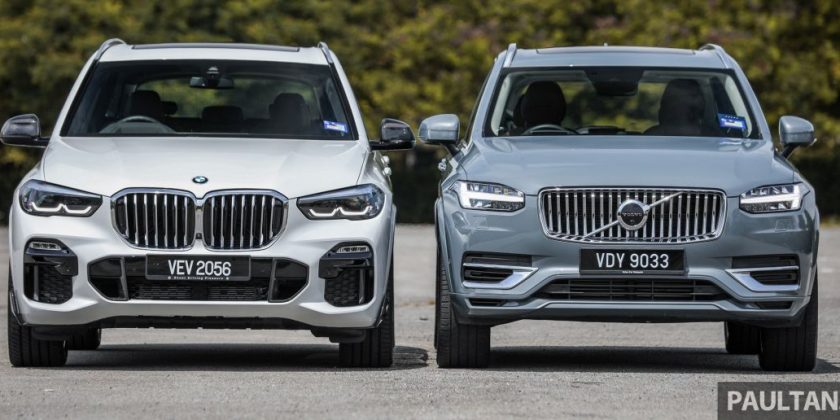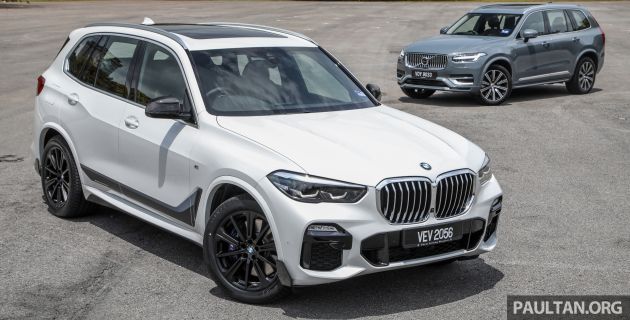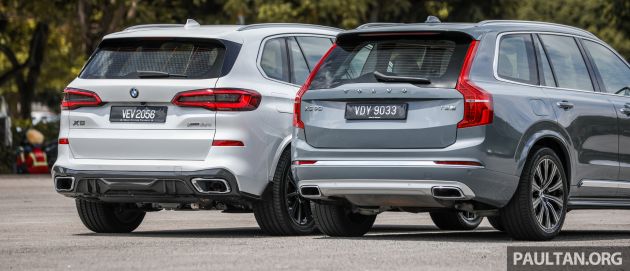If you’re looking for a large premium SUV, here’s a massive gallery of the two best-selling plug-in hybrid models in Malaysia – the 2020 G05 BMW X5 xDrive45e M Sport and the Volvo XC90 T8 Inscription Plus. Hopefully choosing between the two will be easier with this set of like-for-like photos.
The newer of the pair, the X5 is priced at RM440,745, compared to RM391,150 for the range-topping XC90. Mind you, the BMW is pictured here with RM43k worth of optional M Performance parts, upping the price difference between the two from RM50k to almost RM100k.
Now in its second PHEV generation, the X5 carries a larger 3.0 litre turbocharged straight-six engine with a combined system output of 394 hp and 600 Nm. The XC90, despite carrying an unchanged 2.0 litre supercharged and turbocharged engine, still enjoys a slight power advantage with its 407 hp and 640 Nm of torque.
Both are claimed to get from 0-100 km/h in 5.6 seconds, although the X5 boasts a higher all-electric range of up to 77 km, thanks to a significantly larger 24 kWh battery pack. With its 11.6 kWh battery (slightly bigger compared to the pre-facelift model), the Volvo claims a respectable 50 km EV range.



Their interiors are wildly different too, with the Volvo being a seven-seater while the BMW only seats five. The X5 clearly has a more modern looking dashboard, though the XC90 is by far and away the more practical of the two. The X5’s 500-litre boot looks to be spacious enough, but is 140 litres short of the XC90’s.
One department where the BMW is superior is in terms of interior tech – it has wireless Apple CarPlay (though you do have to pay extra for it) and a pair of screens for rear passengers. The Volvo, however, counters with its best-in-class Bowers & Wilkins premium audio system, which is a huge upgrade over the X5’s Harman Kardon unit.



Beyond that, equipment levels are largely similar, apart from advanced driving assistance features where the Volvo pulls ahead. Thankfully, both models have autonomous emergency braking (AEB) as standard, but the Volvo also adds on full semi-autonomous driving features on board the XC90.
We’ll have a comprehensive comparison review video coming up next week, so stay tuned. The head-to-head will cover the two SUVs’ performance, real world fuel economy, driving dynamics, comfort and of course, overall value and appeal. Which one do you think will come out on top, and why? Do comment below and remember to check back soon for our full verdict.
Source: Read Full Article





